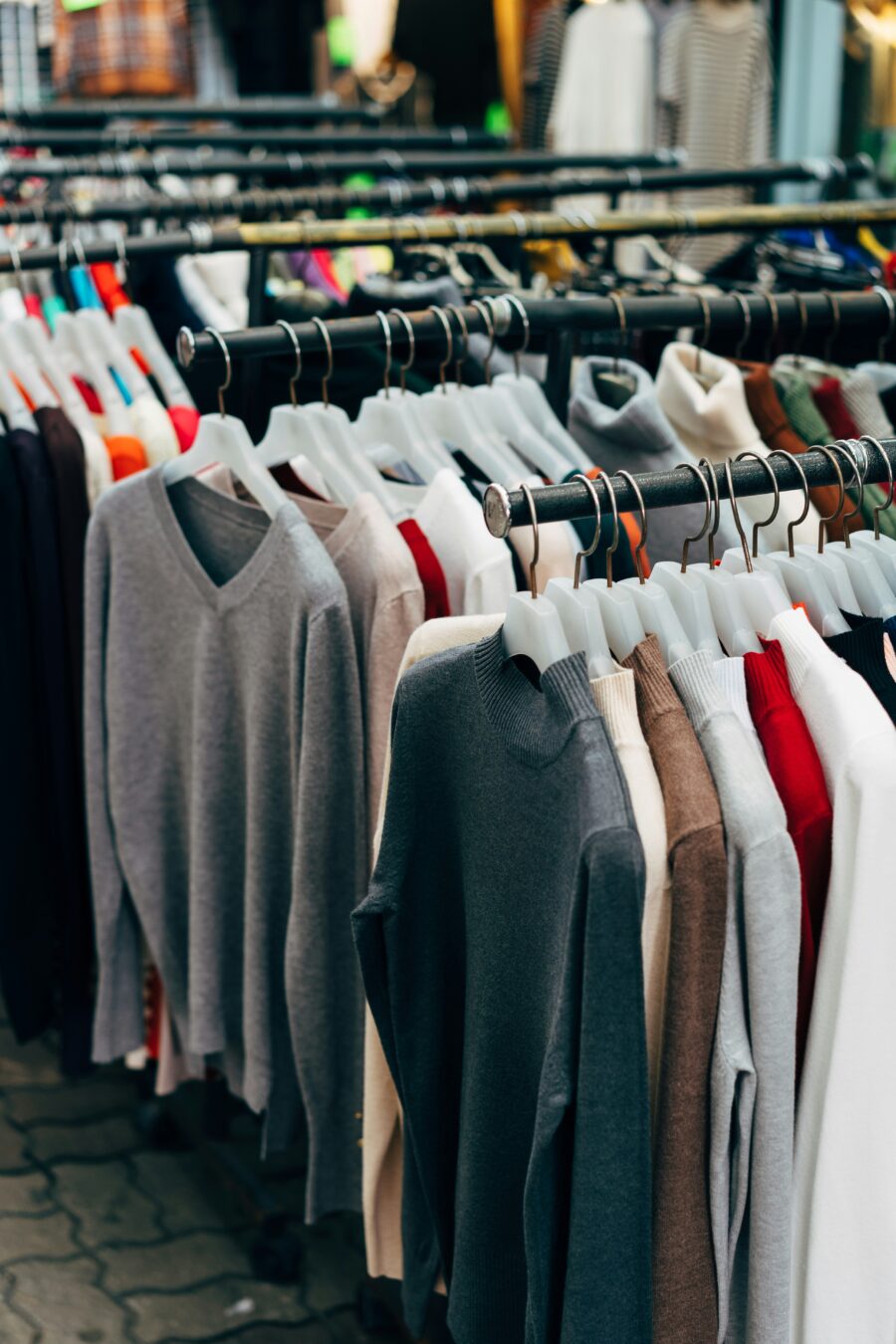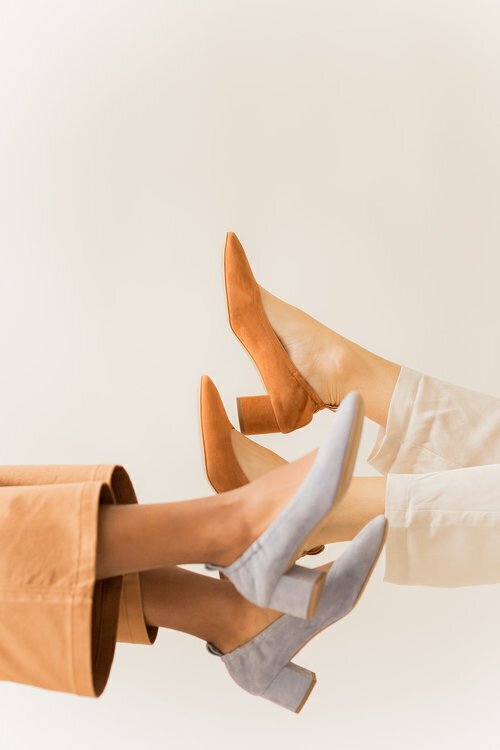
10 Thrift Shopping Tips For Sourcing Secondhand Clothes
Thrift shopping is having a moment. More and more people are giving pre-loved clothing a second chance at life and for a good reason. Not only can great quality pieces be found for too-good-to-be-true prices, but by buying secondhand, we’re keeping still-wearable garments out of the landfill. Plus, who doesn’t love a good thrift shop find?
If you’re new to the art of thrift shopping, be forewarned: Hunting for pre-loved treasures can be tiring and overwhelming. The rewards, however, outweigh the challenges!
To help you make the most out of your next thrift shopping excursion, here are ten tips on how to thrift shop like a boss. By following some of our go-to thrifting tips, you may just walk away with unique threads for amazing deals. Can’t beat feeling like a million bucks when you’re spending far, far less. 💸
1. Make a plan using your smartphone
“Thrift shopping without a clear goal is like grocery shopping on an empty stomach: It’s doable but not ideal.”
Thrift shopping without a clear goal is like grocery shopping on an empty stomach: It’s doable but not ideal. Make a mental list of what you’re looking for based on what you already own. This will help keep you focused and on budget. In addition, save pictures of coveted gems and fashion inspiration on your phone or a Pinterest board for quick reference. This will make it easier for store clerks to help you locate specific garments or let you know if they have something similar on the racks.
2. Sell your pre-loved garments first
Another way to stick to your budget is to opt for consignment stores that not only sell pre-loved clothes but also buy them. Whether you’re looking to make some extra cash or simply clear your closet before adding new treasures, these stores are great for trading-in the garments you no longer wear. The best part? You can shop while the store clerks inspect and price-out your inventory. If you’d rather, you can also sell your clothing and accessories online!
3. Dress for the occasion
Depending on where you shop, some thrift stores have limited to no fitting rooms — and we don’t recommend buying something without making sure it’s a good fit, as many thrift stores don’t issue refunds or exchanges. To remedy this, wear a form-fitting tank top and biker shorts or leggings to make trying things on as easy as possible, even if it means changing in the middle of the store. For the thrift stores that do have fitting rooms, this also makes changing quick and efficient.
Thrifting is like a sport. It requires stamina, patience, and, sometimes, upper body strength to carry your finds when shops don’t provide carts or baskets. You can easily spend hours in a thrift store worthy of its name. This is another reason to wear comfortable clothing and shoes. A crossbody bag is also great, so your hands can be free to browse all those racks!
If you’re shopping online, get familiar with your measurements — if available, you can check out the website of the brand you’re purchasing for the closest possible size match.
4. Shop with cash only to avoid impulse buys
“Purchase only the clothes you need and that fit well with your current wardrobe.”
To stay on budget, bring cash when you go thrift shopping. While it’s easy to fall into the ‘but it’s so inexpensive’ trap, remember to stick to your values. Purchase only the clothes you need and that fit well with your current wardrobe. You will stumble upon unique and beautiful pieces, but if they are not your style, you won’t get any wear out of them. So admire them from afar, take a picture if you must, but don’t take them home with you.
5. Save time by scanning the aisles
“Make your way through the store and scan each rack for pieces that stand out.”
Rummaging through multiple piles and racks of clothes is not for the faint at heart. Depending on the size of the thrift store you go to, taking the time to look at every single piece will take forever. To avoid wasting time without missing out on potential gems, you must master the art of the scan. Based on what you are looking for and your preferred color palette and aesthetics, make your way through the store and scan each rack for pieces that stand out and catch your eye. This takes focus and is a skill you will develop over time.
If you’re shopping from home, many online thrifting platforms and online vintage jewelry sites will allow you to filter clothing and accessories by size, color, and occasion — be sure to take advantage of this feature when available!
6. Consider material selection
While you’re browsing in store aisles or scouring online thrift sites, paying attention to the material of each clothing item can make or break how well your finds hold up and wear. Natural materials like cotton, linen, wool, and silk are breathable and often more comfortable, but they can require extra care — think hand washing or avoiding the dryer. On the flip side, synthetic fabrics like polyester and nylon are usually more durable, wrinkle-resistant, and easier to clean, but they might not be as eco-friendly since they’re often derived from fossil fuels and can shed microplastics during washing.
A bonus of natural fabrics is that they tend to age beautifully (hello, soft vintage tees), while synthetics can sometimes pill or fade oddly. To find out what a piece is made of, check the care tag inside — it usually lists the fabric composition. If the tag is missing, use your senses: Natural fabrics tend to feel softer and more breathable, while synthetics might have a slicker or more structured feel.
7. Shop creatively
“Sometimes the thrifted item of our dreams might not always be where we expect.”
Sometimes the thrifted item of our dreams might not always be where we expect. For example, it’s typical to check out the denim section if we’re in need of a pair of jeans, or the handbag section for a vintage wallet, but have you thought of checking out sections you’ve never browsed through for the potential of finding that hidden gem? Looking for baby tees or retro graphic shirts? Try the kids section for potential cool finds. On the market for a trendy slip dress or a wearable corset? The lingerie section may just have what you’re looking for! Examining both the men’s and women’s clothing aisles has also helped us find some our most beloved clothing pieces — think baggy jeans, varsity jackets, leather trench coats, and even unisex shoes like Converse and Doc Martens.
8. Look for damage
As you select your favorite pieces, it’s important to throughly check each thrifted item for damage before purchasing. It’s easy to miss a small hole here or a stain there amid the shopping excitement, so take your time going over your finds before committing to a purchase. Start with the basics: Give the piece a good once-over in bright lighting (or use your phone flashlight if the store’s lighting is dim). Look for stains, holes, or discoloration, especially in high-wear areas like the armpits, cuffs, and hems. Be sure to also check seams and buttons to make sure nothing is loose or missing — buttons are an easy fix, but broken zippers can be a pain. Don’t forget to flip the piece inside out to catch hidden rips or snags in the lining.
As mentioned before, most, if not all, thrift store purchases are final sale. Not skipping this step can save you unnecessary heartbreak. If you’re buying from an online thrift store, inspect the item as soon as it arrives. Many online sellers offer refunds, exchanges, or partial refunds if the damage wasn’t disclosed in the listing — so take photos and reach out to customer service right away. A little damage doesn’t have to be a dealbreaker, but it’s always good to know what you’re working with before you decide to keep or pass on the item.
9. Tailor your thrift store finds
Whether it’s new, thrift, or vintage, every piece in your closet should fit you like a glove. Since pre-loved items are often one-of-a-kind, you may need to make alterations. For simple modifications like hemming, try doing it yourself with our instructional guide. You can also take your thrifted items to the dry cleaners. For more intricate customization, you’ll want to consult a tailor, so make sure the piece is worth the investment before you purchase it.
10. Make friends with your thrift store staff
Once you find a thrift store that fits your style and budget, make friends with the staff. They can help you while shopping and also give you valuable information, such as when new merchandise comes in and the clothing they are looking to buy for the store. Plus, everyone needs a shopping friend to tell them yay or nay on a specific piece!
“Everyone needs a shopping friend to tell them yay or nay on a specific piece!”




